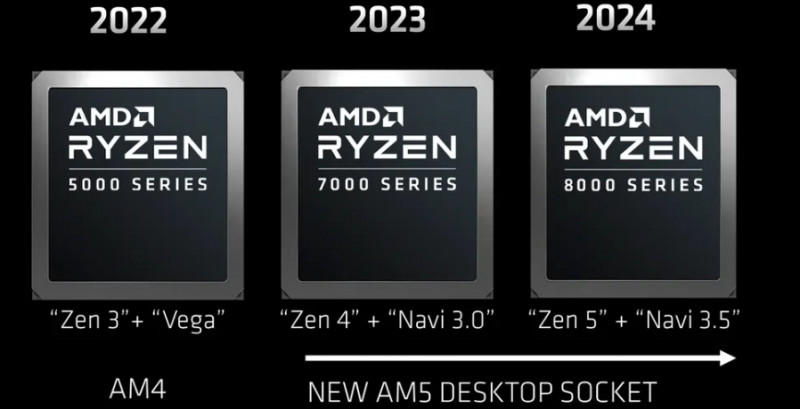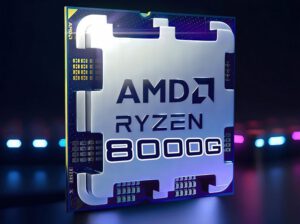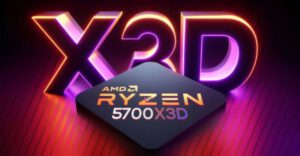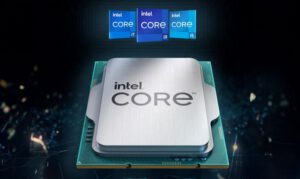AMD Begins Preparing for Zen 5 Processors Launch
This could be indicated by the emergence of several patches for the Linux operating system.
Over the last two days, six patches have been released for AMD’s power management controller driver for Linux. As reported by Phoronix, these PMC driver patches for the yet-to-be-released 1Ah family processors are likely related to the AMD Zen 5 generation, which will compete with the best processors from its competitor. One of the most important functions provided by the PMC includes various sleep states, including “s2idle,” a system sleep state only available to software.

As important as these six patches are for the basic functionality of the system, they modify just two dozen lines of code and do not reveal anything else, at least at a cursory inspection.
Nevertheless, considering the timing of these driver fixes shortly before 2024 and the constant stream of AMD patches for the 1Ah Linux family observable since July this year, it seems that AMD is intent on laying the necessary groundwork for Zen 5 in Linux operating systems as quickly as possible.
The nature of these patches may mean that AMD plans to release Zen 5 earlier in 2024 than Zen 4 and Zen 3, which went on sale in the fourth quarter of their respective years. A leak last week about the next-generation EPYC Zen 5c processor also leans towards this, although the chip in question is technically an engineering sample, not a production processor.
One of the expected features of the Zen 5 architecture will be the integrated iGPU Navi/RDNA 3.5 graphics. Leaks supposedly indicate an integrated GPU with 40 RDNA 3.5 compute units, comparable to the Radeon RX 6750 XT based on RDNA 3, which in turn competes with the RTX 3070 and RTX 3060 Ti. Such power will likely allow AMD to reclaim the lead in iGPU performance compared to Arc graphics in Meteor Lake.
The potential of AMD RDNA 3.5 graphics in Linux could also bring the release of the Steam Deck 2 console closer, or at least lead to better competition with the Steam Deck OLED and ROG Ally, which have 8 CU RDNA 2 CU and 4 CU RDNA 3, respectively.
- Industry Impact: AMD’s accelerated timeline for Zen 5 may indicate a strategic shift to gain a competitive edge over rivals like Intel and Nvidia. By releasing their new generation processors earlier than usual, AMD could capitalize on current market dynamics, especially in sectors like gaming, data centers, and high-performance computing.
- Technological Advancements: The Zen 5 architecture is expected to bring significant performance improvements over Zen 4. This includes better energy efficiency, higher clock speeds, and advanced chiplet designs. The integration of Navi/RDNA 3.5 graphics suggests a substantial leap in on-chip graphics performance, potentially making Zen 5 processors attractive for both gamers and professionals who require powerful graphics capabilities without a separate GPU.
- Market Speculation: The market is abuzz with speculation about how Zen 5 processors will affect the pricing and performance tiers of CPUs. There’s anticipation that AMD might aggressively price these chips to undercut Intel’s offerings, potentially leading to a more competitive market and better prices for consumers.
- Potential Applications: With the integrated advanced iGPU, Zen 5 processors could find extensive use in compact and energy-efficient systems. This makes them ideal for next-generation laptops, small form factor PCs, and potentially new iterations of gaming consoles. The high compute unit count in the integrated GPU might also make these processors appealing for entry-level gaming systems and professional workstations used in graphic design and video editing.
- Linux Compatibility and Open Source Community: The focus on Linux compatibility from the get-go reflects AMD’s commitment to the open-source community. This could enhance the appeal of AMD processors among developers, researchers, and businesses that rely heavily on Linux for their operations.
- Future Predictions: The release of Zen 5 might set a new benchmark in processor technology, potentially influencing future developments in the CPU market. It’s also plausible that AMD will continue to invest heavily in integrated graphics, possibly leading to a future where separate GPUs are not a necessity for most users.



